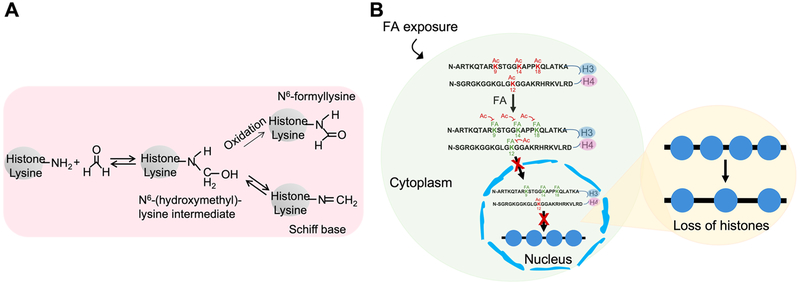Figure 1.
FA induces loss of histones in chromatin. (A) Formation of FA–histone adducts. The reaction between lysine residues and FA generates the intermediate N6-hydroxymethyllysine, from which a labile Schiff base (primary FA–lysine adduct) or the more stable N6-formyllysine can be produced by a subsequent dehydration or oxidation reaction, respectively. Adapted from ref 122. (B) FA forms adducts with lysines on histone proteins, preventing the sites from being physiologically modified. FA exposure reduces acetylations of lysines on newly synthesized histones H3 and H4, thereby inhibiting nucleosome assembly, which contributes to the loss of histones in chromatin, a conserved feature of aging.

